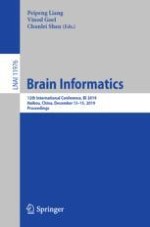2019 | OriginalPaper | Buchkapitel
The Changes of Brain Networks Topology in Graph Theory of rt-fMRI Emotion Self-regulation Training
verfasst von : Lulu Hu, Qiang Yang, Hui Gao, Zhonglin Li, Haibing Bu, Bin Yan, Li Tong
Erschienen in: Brain Informatics
Aktivieren Sie unsere intelligente Suche, um passende Fachinhalte oder Patente zu finden.
Wählen Sie Textabschnitte aus um mit Künstlicher Intelligenz passenden Patente zu finden. powered by
Markieren Sie Textabschnitte, um KI-gestützt weitere passende Inhalte zu finden. powered by
